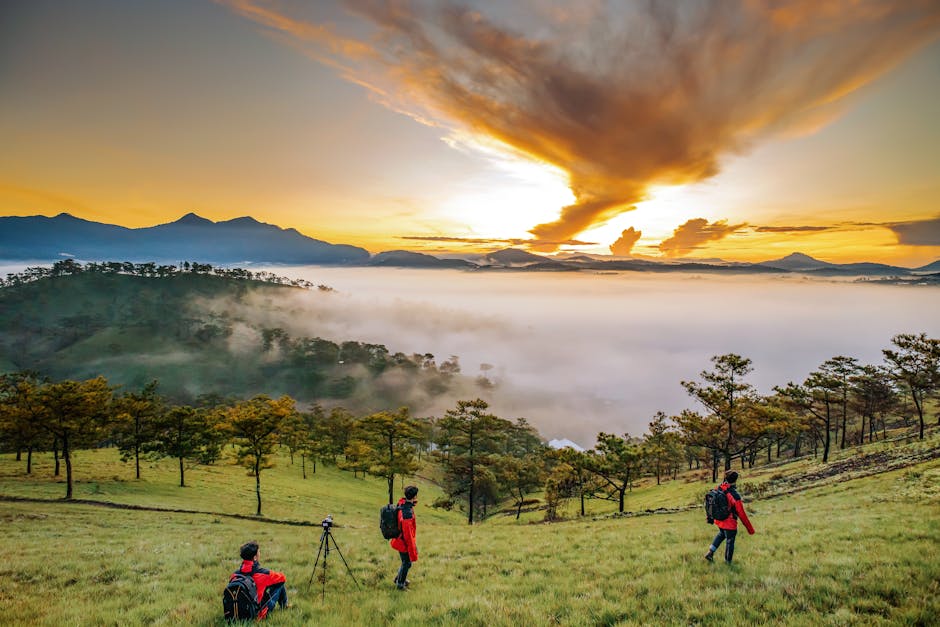How to Capture Perfect Sunset Photos on Your Travels

Capturing the perfect sunset photo while traveling can be a fulfilling yet challenging endeavor. The allure of vibrant colors, the serene ambiance, and the unique settings make sunsets a favorite subject for photographers of all skill levels. However, achieving that ideal shot requires more than just pointing your camera at the horizon. It involves understanding the best times, locations, techniques, and equipment to use.
Choosing the Right Time and Location
The timing and location of your sunset photo are crucial. Sunsets vary greatly depending on geographical location and time of year. Websites like Time and Date provide accurate sunset timings for various locations worldwide. This allows you to plan ahead and find the best spot to capture the moment.
When selecting a location, consider foreground elements such as trees, buildings, or water bodies that can add depth and interest to your photos. Coastal areas, mountains, and open fields are often ideal due to their unobstructed views of the horizon. For urban settings, rooftops or high vantage points can offer a unique perspective.
Arriving at your chosen spot at least 30 minutes before sunset gives you ample time to set up and experiment with different angles and compositions. This period also allows you to capture the changing light conditions leading up to the sunset.
Understanding Camera Settings
Mastering your camera settings is essential for capturing stunning sunset photos. Here are some key settings to consider:
- Aperture: A smaller aperture (higher f-number) like f/8 or f/11 provides a greater depth of field, keeping more of the scene in focus.
- Shutter Speed: Adjusting the shutter speed can help manage exposure. Slower shutter speeds can create beautiful motion blur effects with clouds or water.
- ISO: Keep ISO low (100-200) to reduce noise and maintain image quality.
Using a tripod is highly recommended to avoid camera shake, especially when using slower shutter speeds. Additionally, experimenting with exposure bracketing can help capture multiple exposures of the same scene, which can later be combined using HDR techniques for a balanced final image.
Composing Your Shot
Composition plays a vital role in creating compelling sunset photos. The rule of thirds is a fundamental guideline where you divide your frame into nine equal parts by two horizontal and two vertical lines. Placing key elements along these lines or at their intersections can create a balanced and visually appealing composition.
Leading lines, such as roads, rivers, or shorelines, can guide the viewer's eye towards the sunset. Incorporating silhouettes by positioning subjects between your camera and the setting sun can add drama and intrigue to your photos.
Another technique is framing, where you use natural elements like branches or archways to frame your shot. This adds context and draws attention to the sunset while enhancing the overall composition.
Post-Processing Tips
Post-processing is an essential step in achieving that perfect sunset photo. Software like Adobe Lightroom or Photoshop offers powerful tools to enhance your images. Start by adjusting basic parameters such as exposure, contrast, and white balance to correct any color casts caused by the setting sun.
Saturation and vibrance adjustments can help bring out the rich colors of the sunset without making them appear unnatural. Be mindful not to overdo it; subtle enhancements often yield the best results.
Cropping your photo can improve composition by removing distracting elements or aligning key elements according to compositional rules like the rule of thirds. Sharpening tools can enhance details but should be used sparingly to avoid introducing noise.
| Camera Setting | Recommended Value |
|---|---|
| Aperture | f/8 - f/11 |
| Shutter Speed | 1/60s - 1/250s (adjust as needed) |
| ISO | 100 - 200 |
| White Balance | Auto or Cloudy |
| Shooting Mode | Aperture Priority or Manual |
By mastering these aspects—timing, location selection, camera settings, composition techniques, and post-processing—you'll be well-equipped to capture stunning sunset photos on your travels. Each element plays a crucial role in turning an ordinary sunset into an extraordinary photograph that resonates with viewers.
The effort you invest in planning and executing your shots will pay off when you review your images later. Whether you're aiming for vibrant colors or dramatic silhouettes, understanding these key factors will help you achieve impressive results that capture the essence of your travel experiences.
